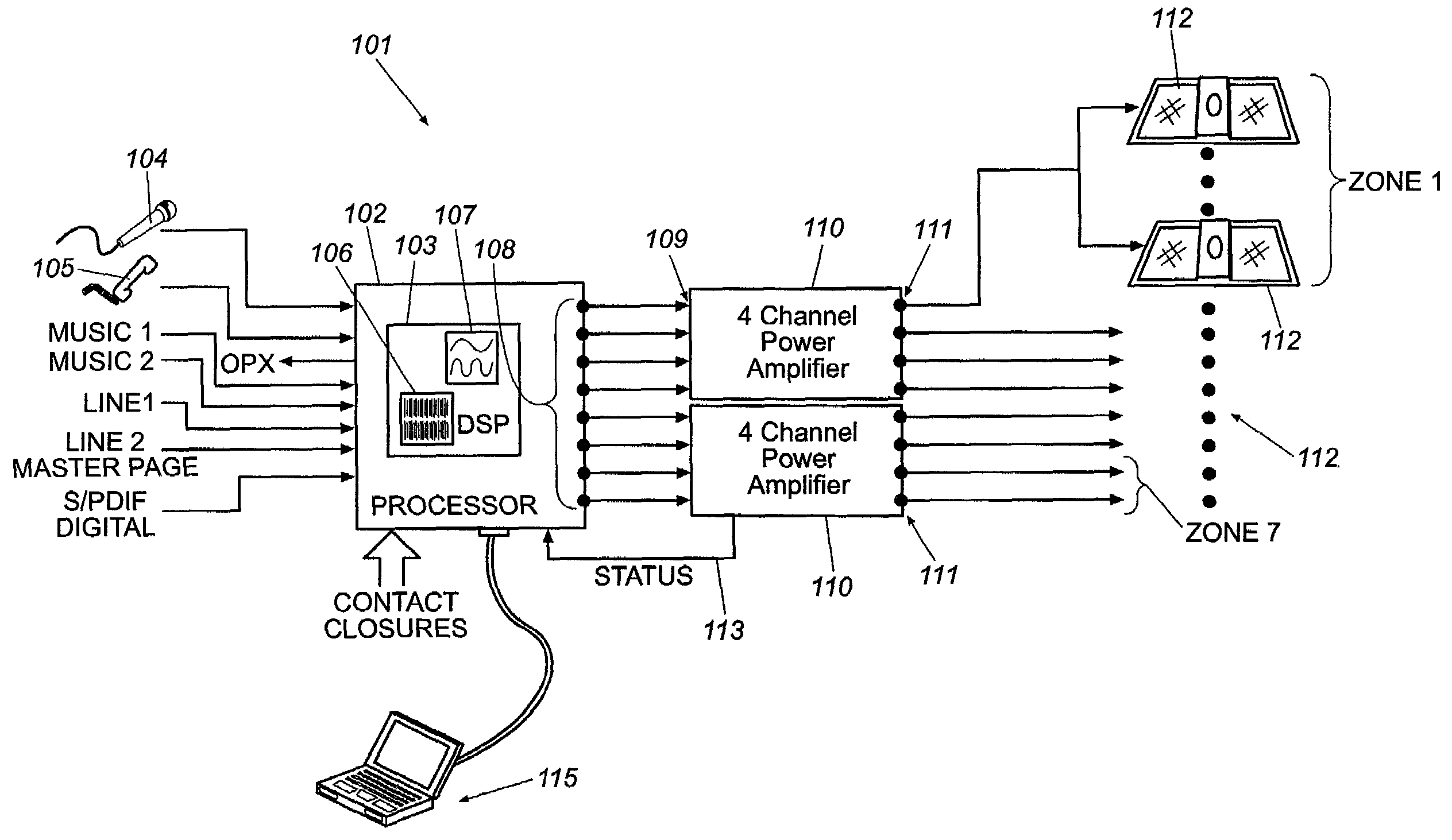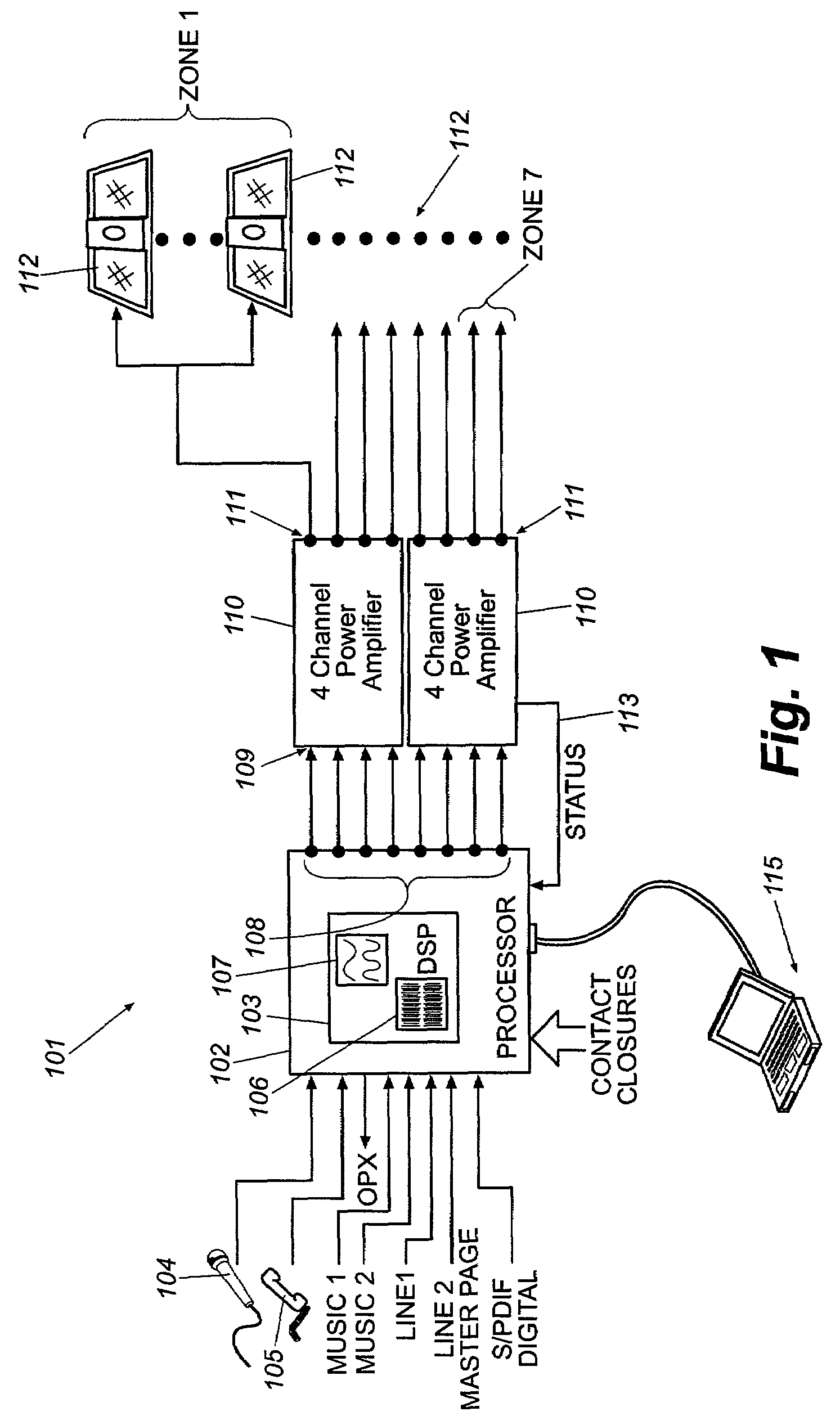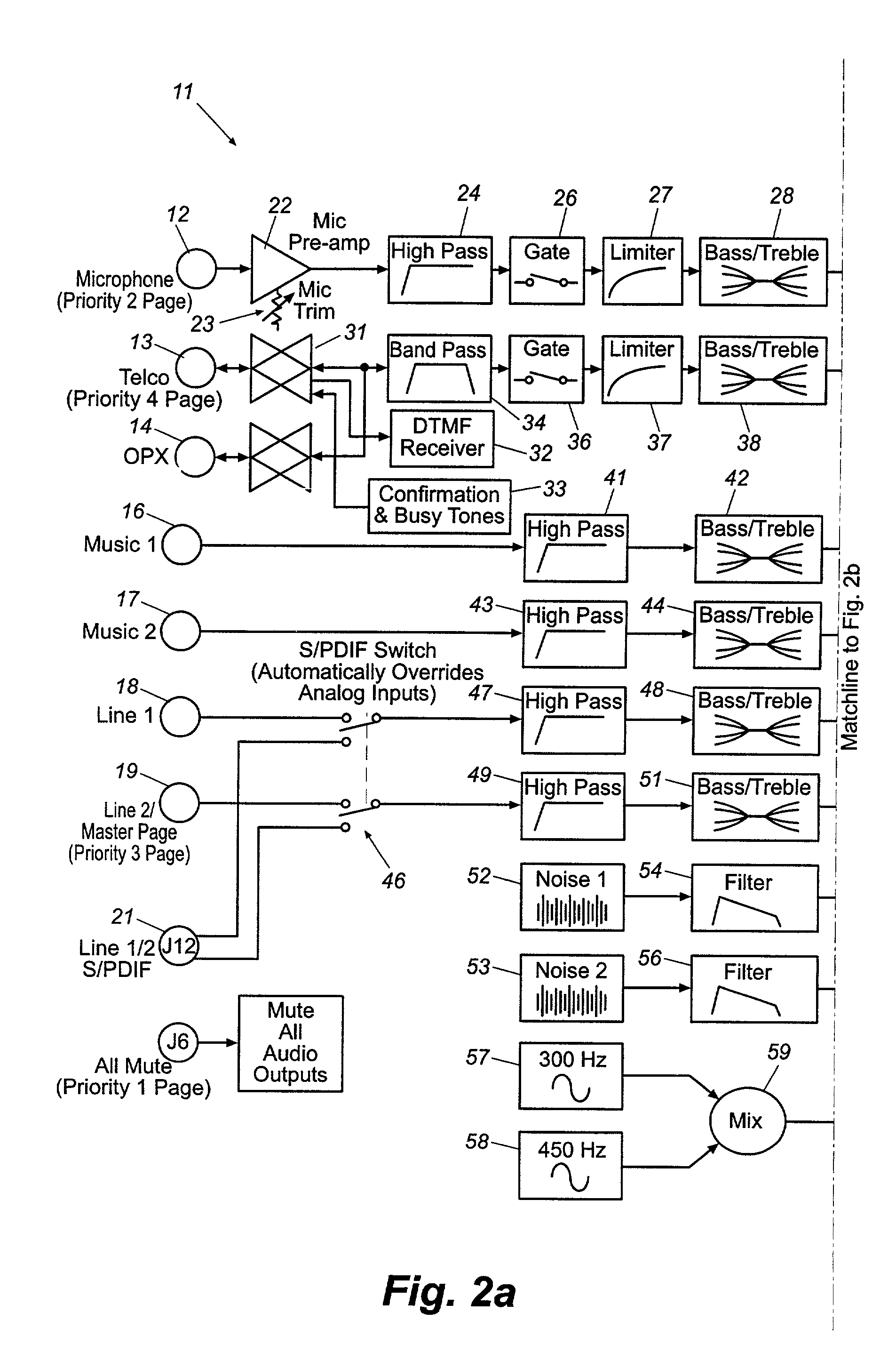Architectural sound enhancement with pre-filtered masking sound
a technology of architectural sound and masking sound, applied in the direction of sound producing devices, electrical transducers, instruments, etc., can solve the problem of not being able to know in advance what, and achieve the effect of effective masking of human voices, high degree of accuracy, and less annoying
- Summary
- Abstract
- Description
- Claims
- Application Information
AI Technical Summary
Benefits of technology
Problems solved by technology
Method used
Image
Examples
Embodiment Construction
[0020]Reference will now be had to the drawings, which illustrate in more detail a preferred system and implementation of the present invention that represent the best mode known to the inventors of carrying out the invention. FIG. 1 illustrates a preferred configuration of hardware comprising the system of the invention. The system 101 comprises a processor 102, which includes a DSP chip 103. The processor has a plurality of inputs to accommodate a microphone 104, to be used for paging, a telephone device 105, music 1 and music 2 inputs, line 1 and line 2 inputs, and a stereo S / PDIF digital audio input. The line 2 input also may function as a master page input in some configurations of the system, as discussed in more detail below. In addition to the external input signals, masking sound signals 106 and test tone signals 107 are stored and / or generated within the DSP 103. The processor also is provided with an array of contact closures for implementing a variety of system functions...
PUM
| Property | Measurement | Unit |
|---|---|---|
| frequency | aaaaa | aaaaa |
| frequency | aaaaa | aaaaa |
| frequency | aaaaa | aaaaa |
Abstract
Description
Claims
Application Information
 Login to View More
Login to View More - R&D
- Intellectual Property
- Life Sciences
- Materials
- Tech Scout
- Unparalleled Data Quality
- Higher Quality Content
- 60% Fewer Hallucinations
Browse by: Latest US Patents, China's latest patents, Technical Efficacy Thesaurus, Application Domain, Technology Topic, Popular Technical Reports.
© 2025 PatSnap. All rights reserved.Legal|Privacy policy|Modern Slavery Act Transparency Statement|Sitemap|About US| Contact US: help@patsnap.com



